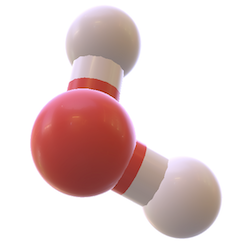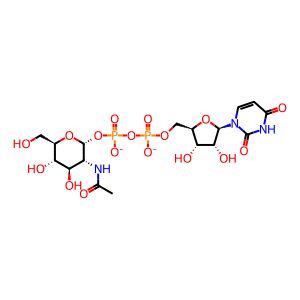Reaction: Defective EXT1 (in EXT1:EXT2) does not transfer GlcNAc to the terminal GlcA residue
- in pathway: Defective EXT1 causes exostoses 1, TRPS2 and CHDS
Exostosin 1 and 2 (EXT1 and 2) are dual-specific glycosyltransferases required to form heparan sulfate (HS) which is involved in regulating variousbody functions during development, homeostasis and pathology including blood clotting, angiogenesis and metastasis of cancer cells. They are able to transfer N-acetylglucosamine (GlcNAc) and glucuronate (GlcA) to HS during its synthesis. Defects in EXT1 can cause hereditary multiple exostoses 1 (MIM:133700), an autosomal dominant disorder characterised by multiple projections of bone capped by cartilage resulting in deformed legs, forearms and hands (Petersen 1989). Trichorhinophalangeal syndrome, type II (TRPS2 aka Langer-Giedion syndrome, LGS) is a disorder that combines the clinical features of trichorhinophalangeal syndrome type I (TRPS1, MIM:190350) and multiple exostoses type I, caused by mutations in the TRPS1 and EXT1 genes, respectively (Langer et al. 1984, Ludecke et al. 1995; not annotated here). Defects in EXT1 such as frameshift mutations S478Lfs*43 and p.K177Efs*9 may also be responsible for chondrosarcoma (CHDS; MIM:215300) (Hecht et al. 1997; not annotated here).
Mutations that cause multiple exostoses 1 include L490Rfs*9, G198Afs*54, R339L, G339D and R340C (Ahn et al. 1995, Hecht et al. 1997, McCormick et al. 1998, Cheung et al. 2001, Xu et al. 1999).
Mutations that cause multiple exostoses 1 include L490Rfs*9, G198Afs*54, R339L, G339D and R340C (Ahn et al. 1995, Hecht et al. 1997, McCormick et al. 1998, Cheung et al. 2001, Xu et al. 1999).
Reaction - small molecule participants:
UDP-GlcNAc [Golgi lumen]
Reactome.org reaction link: R-HSA-9036283
======
Reaction input - small molecules:
UDP-N-acetyl-alpha-D-glucosamine(2-)
Reaction output - small molecules:
Reactome.org link: R-HSA-9036283

